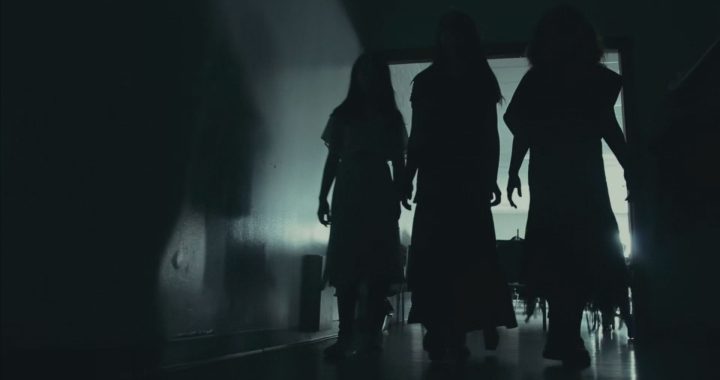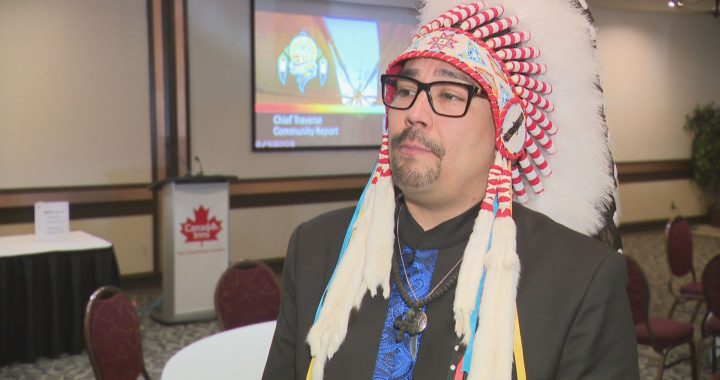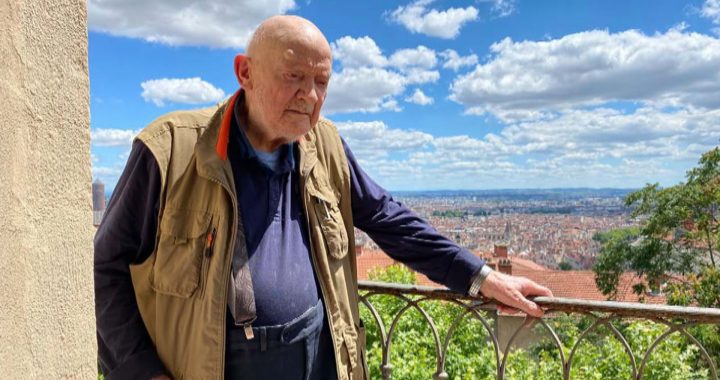Grand Chief Constant Awashish stands in front of a giant map of the Atikamekw territory that takes up most of a wall, takes a step forward and points to one small area in particular.
“This is where I grew up, this territory here, when I was young,” Awashish says, his voice tinged with nostalgia for hunting, trapping, and long walks with his grandfather through the land the Atikamekw call Nitaskinan.
“We never exchanged, we never gave away, we never sold our land,” Awashish affirms from the Council of the Atikamekw Nation headquarters in La Tuque, Que.
One of Awashish’s first acts after being elected grand chief in 2014 was to declare sovereignty over the 80,000 square kilometres of Nitaskinan in central Quebec.
Negotiations for a trilateral agreement with Canada and Quebec have been ongoing.
But recently those negotiations hit a snag.
(Grand Chief Constant Awashish points out the Atikamekw territory on a map. Photo: Tom Fennario/APTN)
On January 22, Chief Christian Awashish and few dozen community members from Opitciwan First Nation (one of three Atikamekw communities) held a news conference on the steps of Montreal’s Palais de Justice courthouse.
“40 years! 40 years of negotiations that haven’t led to satisfactory social projects, so starting today, we will cease all territory negotiations and we will commence with a demand for title,” said Chrstian Awashish, before entering the courthouse and kicking off a lawsuit in Quebec superior court demanding recognition of their ancestral land.
The Atikamekw Council of Opitciwan is basing much of their case on the landmark 2014 Tsilhqot’in Nation vs British Columbia supreme court decision.
The Tsilhqot’in decision was the first time the Supreme Court of Canada declared Aboriginal title in litigation.
“The situation with Tsilhqot’in is very similar with Opitciwan,” said Nadir André, an Innu lawyer for the BLG law firm that is representing Opitciwan in the lawsuit.
“It’s a semi remote community, semi nomad community and they still use the land, they still have elders they still have their way of life, so they have what it takes to actually go prove their title.”
Constant Awashish studied law at the University of Ottawa.
He says he understands Opitciwan’s frustration, but doesn’t agree that litigation is the way to go.
“I think we’re going to just spend 15 to 20 years in court just to go back where we were,” said Awashish, who is concerned that law firms will use Tsilhqot’in as an excuse to encourage expensive litigation for First Nations.
Awashish is also quick to mention that the Tsilhqot’in decision only applies to a fraction of their ancestral lands.
“I want my children, my grandchildren, to have a good life, that’s what I want as a leader. I don’t want to give them conflict, unsolved disputes for the future,” said Awashish, who as grand chief of the Atikamekw Nation council is mandated to negotiate with Canada and Quebec on behalf of the three Atikamekw communities, including Opitciwan.
Kirsten Anker specializes in Aboriginal law and has taught at the faculty of law in Mcgill University since 2007.
She says negotiation is generally thought to be a better course of action than litigation.
“Litigation is seen as a winner takes all approach, so it’s high risk because you’re not guaranteed to win and if you lose you lose everything,” said Anker.
Anker does add that litigation can help give leverage to a party, especially if they’re dealing with an opponent that is not taking their concerns seriously.
But Anker cautions that although the Tsilhqot’in decision sets a precedent for a land claim that doesn’t follow colonial agricultural occupation models, ancestral territory still needs proved.
“It is extremely difficult to prove all that detailed evidence for every part of the territory, especially if the group has ranged over a large extent of land,” explained Anker
Anker also adds that one benefit of litigation is that sometimes courts can be used to make negotiations take place on a more level playing field between advisories.
“It establishes ground rules so if you have one party who doesn’t think the other party has any rights and there’s no one really saying the contrary except for the group themselves, and they have no power to really move anything,” said Anker “then you don’t have any incentives on the part of the powerful party to engage, so the court helps establish those incentives.”
Regardless, Anker says taking on a powerful opponent in the courts or during negotiations is not to be done lightly.
“General opinion is that the groups that have been the most successful, like the James Bay Cree are often held up as a model, they have made a determined effort to act in unity,” observed Anker.
But unity is not a word that describes the Atikamekw nation in this case.
And it appears that might need to change before their land claim is to be resolved anytime soon.









